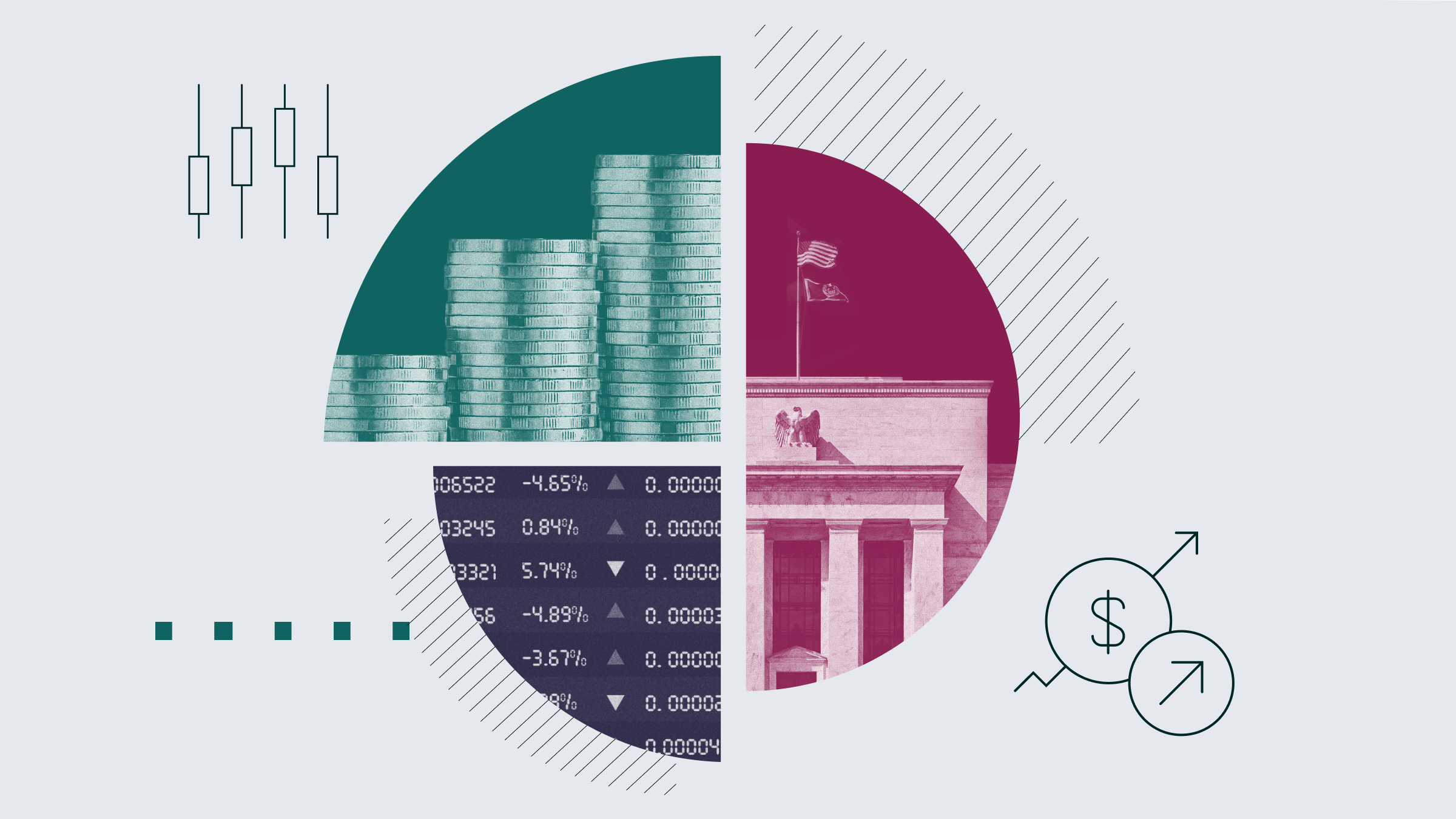Jason Stipp: I'm Jason Stipp for Morningstar, and welcome to The Friday Five: five stories from the market this week and Morningstar's take.
Joining me with The Friday Five is Morningstar markets editor Jeremy Glaser.
Jeremy, thanks for being here.
Jeremy Glaser: You're welcome, Jason.
Stipp: Top story this week: Michael Lewis' new book put high-frequency trading front and center, but is this something that individual investors really need to have on their radar?
Glaser: High-frequency trading is nothing new; it's been going on for years now. But with this book and the 60 Minutes segment, and The New York Times excerpt, it's really come to the forefront of public consciousness.
Michael Lewis is using some pretty strong language, saying the market is "rigged," and that individual investors just don't really have a shot. I think this is probably somewhat misleading based on the timeframe that you're looking at.
I think that Lewis is absolutely right that, when it comes to competing directly with a high-frequency trading firm, individuals obviously don't have a shot. And that high-frequency firms are probably at the margin creating some extra costs when it comes to trading--mainly for big institutional firms but maybe for some individuals also.
Morningstar's John Rekenthaler had an article on Morningstar.com this week pointing out that the big losers here really are some of these institutions, who trade a lot, versus individuals, who hopefully aren't trading that much, and this is probably another sign that that you shouldn't be.
If you look at buying a great company and holding it for 20-30 years, being too worried about a penny here or there when the trade gets executed is missing the big picture. And the market, in terms of allowing investors to be the owner of a great business and to have that compound over time, is certainly not rigged against individuals. If anything, not having to worry about quarterly reporting and not having to worry about some of the constraints of institutional investors, individuals actually have a bit of an advantage there.
I think they shouldn't be too worried about high-frequency trading as the end of the world or the end of the stock market. It doesn't mean that regulators aren't going to get involved; it doesn't mean there aren't some bad actors out there who maybe are doing some unscrupulous things. But I think you need to really look at the big picture.
Stipp: In stock news this week, more bad news for GM, and their CEO was also testifying this week. So what's the bottom line for investors?
Glaser: It was not a good week for General Motors. This is a story we've been talking about for some time, about these recalls that seem to keep getting bigger and bigger and involve more and more people and more and more cars. I think GM really has a very serious issue on their hands, but probably one that they're going to be able to overcome.
Dave Whiston, who's our GM analyst, expects there could be around $1 billion in liabilities that they might have to reserve against for this--or even higher than that. But he points out that even if it is as high as $5 billion, you're still not talking about a huge amount of money compared to the size of the company and compared to the liquidity that they have--maybe a couple of dollars a share, and something that GM would be able to overcome.
Also, these really are legacy issues. He believes that the new cars that they're producing now won't have these same kind of quality control issues, and once they fix through some of these legacy problems, they will be able to keep their brand equity and they will be able to keep making decent sales. They had good March auto sales, for example, as they said this week.
There obviously is still some reputational risk--they're not completely out of the woods--but he does see the shares as looking modestly undervalued right now.
Stipp: Morningstar analysts this week upgraded Costco's moat to wide. What were the drivers behind that upgrade?
Glaser: It's really a self-reinforcing cycle with respect to why it's a good business, and Morningstar analysts said this week that Costco really looks like one that's going to be able to sustain itself for decades to come.
Costco has this cost advantage because of structural issues in the way that they have relatively few products, they turn over their inventory pretty quickly, and they don't have a lot of maintenance capex given how bare-bones their stores are. That lower cost structure allows them to charge lower prices; that builds customer loyalty and makes people want to buy memberships. Those memberships drop right to the bottom line for them and help them have good profitability. This cycle seems to be very much self-reinforcing, and it has continued to go well for them over time. So, in a space where it's very difficult to build a moat, it seems like Costco really has dug a wide one for themselves.
Our Costco analyst Ken Perkins also increased his fair value estimate as the moat increased, and the shares do look to be undervalued right now--maybe not a screaming buy, but certainly one to keep on the radar screen.
Stipp: Amazon this week released a new device to enter the TV set-top space. Is this going to crack the code for living room entertainment?
Glaser: They're joining the fray here with another $99 box, the Fire TV. It's the same price as Apple's device, more than what Google is selling its device for, and more than what Roku is selling its device for.
This has become a very crowded space. There are a lot of different companies trying to solve what's happening in the living room. This is not a new problem. We've had TiVo around for years trying to crack the code of how do you get these Internet-connected devices into homes. Are they these set-top boxes? Should they be from the cable company? Should it be something like a gaming system?
No one has really figured it out, and one of the big issues is content. Because all of these different devices are pulling content from a bunch of different streams--say, Netflix or Hulu Plus, and you have to switch over to your cable box for some content--it really is not a great customer experience. Even though people are still adopting these devices, because the prices are pretty low, no one has really come up with that killer app to really make this work yet.
There have been rumors for years that Apple is working on some kind of integrated project. The cable companies, obviously, are working hard at this. They want to make sure they can keep selling those lucrative subscriptions. But no one has really figured it out.
For Amazon, this probably isn't a big game-changer. It helps reinforce the fact that they're moving to digital, helps reinforce their Prime service and the video offerings with that. So it's probably good that they're moving into this space, but it's probably not going to radically change the direction of the company.
Stipp: Lastly, Monsanto this week reported a good quarter, which really shows their moat is still working hard for them.
Glaser: This really is the week of moats in action, and Monsanto showed it as well in their fiscal second quarter.
They had an 8% year-over-year rise in profit from their corn business, and that comes at a time when the Department of Agriculture says that corn acres in the U.S. are actually down 4%. So, in a market where there's actually less corn being planted, they were able to increase profitability.
That comes from some of their biotech portfolios, from their seed banks and being able to come up with new hybrids and convince farmers to pay more for that. Or potentially they may be taking share from other customers--we don't know exactly what the volume mix looks like. But it is a sign they were able to use their competitive advantages and use that wide moat to really drive results.
And this comes, obviously, ahead of next week, where we really kick off into earnings season, and then we'll get a sense of all kinds of businesses and how they're doing, and get a real read on the economy, particularly at a time when we have some question marks about how the recovery is doing.
Stipp: As always a great crop of insights on the Friday Five, Jeremy. Thanks for joining me.
Glaser: You're welcome, Jason.
Stipp: For Morningstar, I'm Jason Stipp. Thanks for watching.

















